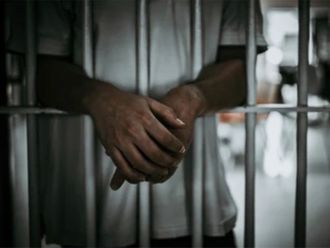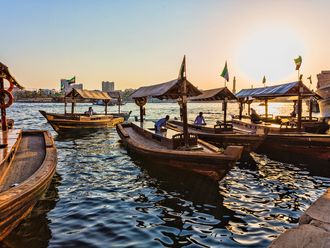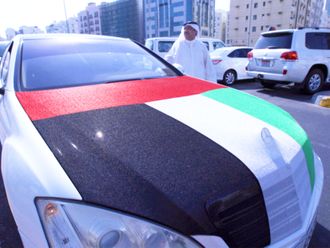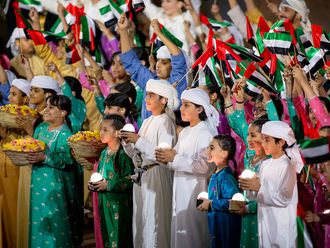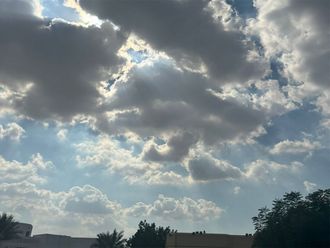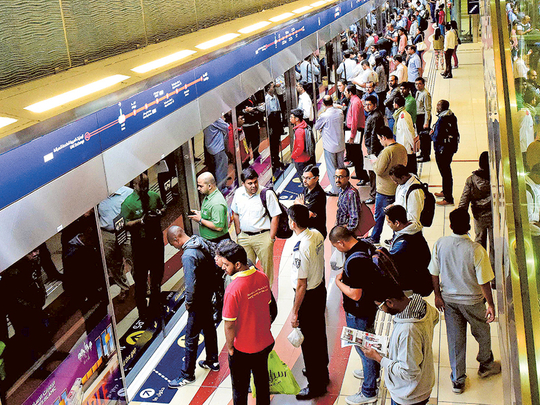
Dubai: Public transport services in Dubai accounted for a 15 per cent share of overall mobility figures among residents across the emirate last year, carrying 539.558 million people, up from 531.350 million riders in 2014, the Roads and Transport Authority (RTA) announced on Saturday.
The average daily ridership of all public transport modes combined jumped to 1.5 million in 2015 compared to 1.475 million the previous year.
Information released by RTA’s statistics department shows that Dubai Metro’s popularity continued to grow last year with 178.647 million people using its services, up from 164.307 million in 2014.
The Red Line of the Dubai Metro continued to prove more popular than the Green Line, recording 112.7 million riders last year, compared with 65.942 million ridership recorded by the Green Line.
In 2014, the Red Line had recorded a ridership of 104 million compared with 60.289 million riders for the Green Line.
Mattar Al Tayer, Director-General and Chairman of the Board of Executive Directors of the Roads and Transport Authority (RTA), who revealed the statistics, said that Dubai tram recorded 4.07 million riders in its first year of service.
According to the numbers released by RTA, public bus services clocked 134.775 million riders last year compared with 148.108 million riders in 2014.
Urban bus services accounted for the lion’s share of bus ridership, recording 88.632 million riders, followed by Metro station feeder services, which recorded 28.3 million riders. Inter-city bus services accounted for 12 million riders, and bus rental services found 5.9 million users.
Abras continued to be the most popular mode of marine transport, ferrying 13.783 million people out of a ridership of 14.426 million recorded by all marine transport modes combined, including water taxis and ferries.
Taxis continued to take the biggest share of ridership, with 103.789 million trips transporting 207.578 million people compared with 217.751 million riders in 2014.
December was the busiest month in terms of ridership, with 48 million riders, while the last day of the year recorded the biggest footfall of 1.859 million.
Highlighting the continuous growth of public transport in Dubai over the last decade, Al Tayer said: “Public transport network in Dubai has become the backbone of people’s mobility in various parts of Dubai. RTA’s efforts in this regard contributed to raising the numbers of public transport ridership across the board. The share of public transport in the mobility of people has leapfrogged from 6 per cent in 2006 to 15 per cent in 2015 and RTA is endeavouring to push it to as much as 20 per cent by 2020, and 30 per cent by 2030.”
He said that RTA has managed to transform attitudes of various segments of the community towards using public transport.
RTA is also stepping up efforts to make public transport more accessible to people, he added. “RTA is proceeding with efforts to make public transport systems the first choice in the mobility of people in their daily movement to work, home or leisure. RTA has ambitious plans for upgrading roads infrastructure and mass transit systems, besides improving the efficiency of public transport, and broadening the delivery of smart services to the public,” he said.
He noted that more than 35 mega projects are being developed simultaneously across the emirate, including the extension of Dubai Metro and upgrade of infrastructure and development of public transport modes to facilitate the Expo 2020.
In the lead-up to 2020, RTA will procure new trains to keep up with the sustained growth in the number of Metro users, as well as broadening the coverage of public transport network to 16 new districts and improving services in 19 others.
Following the opening of Dubai Canal, which will connect Business Bay to the Arabian Gulf, the city’s marine transit modes will also see a major upgrade.


